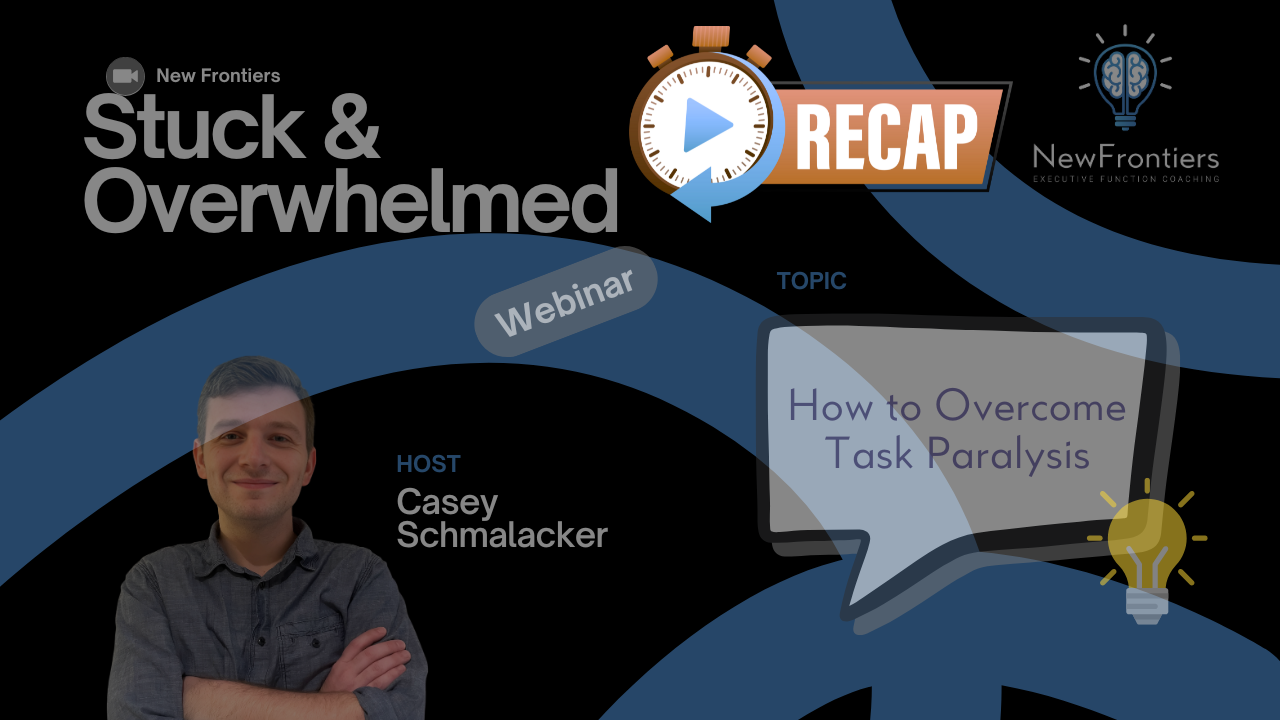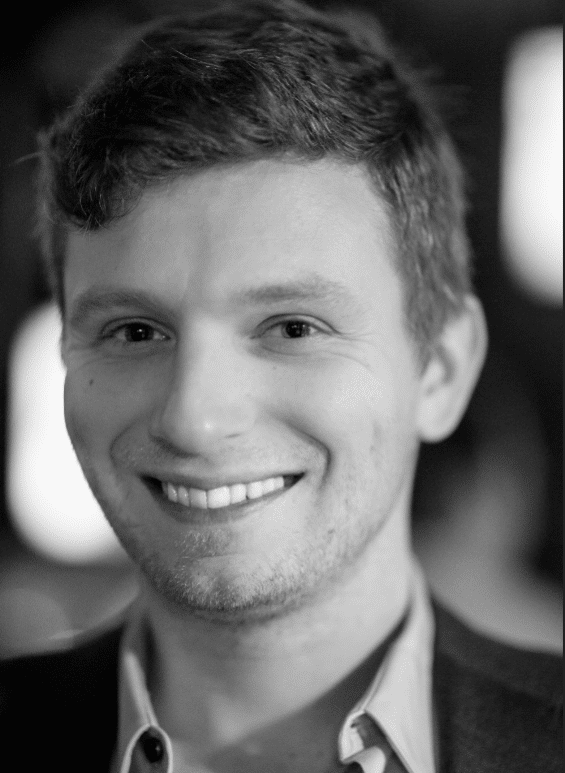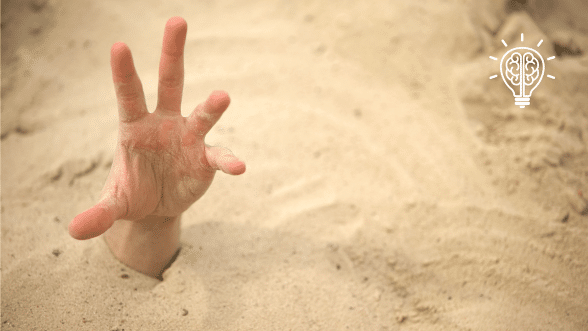You know what you need to do. You even want to do it. But something inside just… stalls. That stuck, frozen feeling? That’s task paralysis—and it’s more common than you think.
In a recent webinar hosted by New Frontiers, Executive Function Coach, Casey Schmalacker, broke down what task paralysis really is, why it happens, and most importantly, how to overcome it using practical, proven strategies. 💬🧠 To watch the full webinar, check it out on youtube.
What Is Task Paralysis?
Task paralysis is the inability to begin a task—even when the intention is there. It’s not about laziness or a lack of desire. It’s about our executive functioning systems getting overwhelmed by stress, ambiguity, perfectionism, or emotional noise.
In short: it’s not a character flaw—it’s a brain thing. 🧩
The Roots of Task Paralysis
Task paralysis isn’t caused by just one issue. It often stems from a mix of:
Executive Functioning Challenges
Trouble with initiation, planning, or working memory.
Emotional and Psychological Blocks
Fear of failure, fear of success, perfectionism, shame, and negative self-talk. 😞
Neurochemical Factors
Dopamine disruptions, decision fatigue, and emotional overload. 🔁
Each of these elements contributes to a cycle of “stuckness” that can feel impossible to break without the right tools.
The Three Cycles That Fuel the Stuck
Casey shared a helpful breakdown of how task paralysis sustains itself:
-
Cognitive Loop:
Lack of clarity → decision fatigue → procrastination → more overwhelm. -
Emotional Loop:
Fear or perfectionism → avoidance → shame spiral → decreased confidence. -
Neurochemical Loop:
Low dopamine from boring tasks → distraction-seeking → decreased satisfaction → more avoidance.
When these cycles overlap, the stuck feeling gets worse—and productivity takes a hit. ⚠️
So What Can You Do About It?
Casey introduced four strategy zones to start turning the tide ⛵:
1. Structures That Support Success
-
Break tasks into Short-Term Achievable Goals (STAGs).
Example: Instead of “write a paper,” start with “open a Google Doc” or “write the first sentence.” ✍️ -
Use planning frameworks like:
-
Must/Should/Could lists
-
Now/Later/Never sorting
-
Must-Do vs. Gravy lists (gravy = the bonus tasks if you have extra time or energy) ✅
-
2. Initiation Rituals
-
Build predictable routines to get your brain into “start” mode.
-
Use the 2-minute rule: start with something too small to fail.
-
Add environmental cues (music, lighting, workspace setup) to reinforce the habit of beginning. 🎶☕📋
3. Momentum Builders
-
Lower the bar: 60% effort is better than no effort.
-
Track progress visually—crossing things off gives a dopamine hit.
-
Celebrate small wins to keep motivation rolling. 🏆
4. Self-Compassionate Mindsets
-
Avoid all-or-nothing thinking.
-
Reframe “I’m failing” to “I’m figuring it out.”
-
Understand that avoidance is often just your nervous system trying to stay safe. 💛
Final Takeaway: You’re Not Broken—You’re Human
Task paralysis doesn’t mean something is wrong with you. It means your brain needs some scaffolding to get moving. By peeling back the layers and addressing the root causes—one small, doable step at a time—you can start shifting from “stuck” to “started.” ✨
Whether you’re a student, professional, parent, or educator, these strategies aren’t just helpful—they’re transformational.
Ready to try one thing?
-
Break a task into 3 small steps.
-
Try an initiation ritual.
-
Use a “Must vs. Gravy” list.
And remember: slow starts are still starts. 🚀
Watch the full webinar here, and share with anyone who may benefit from these tips!
Or, get in touch with us today to begin your journey of getting unstuck!





